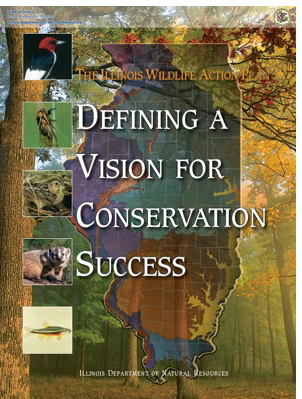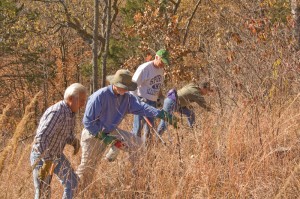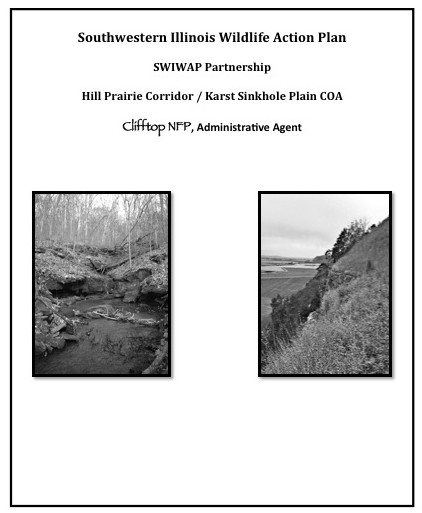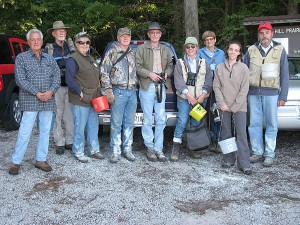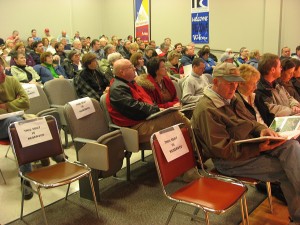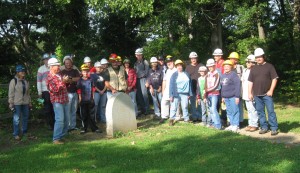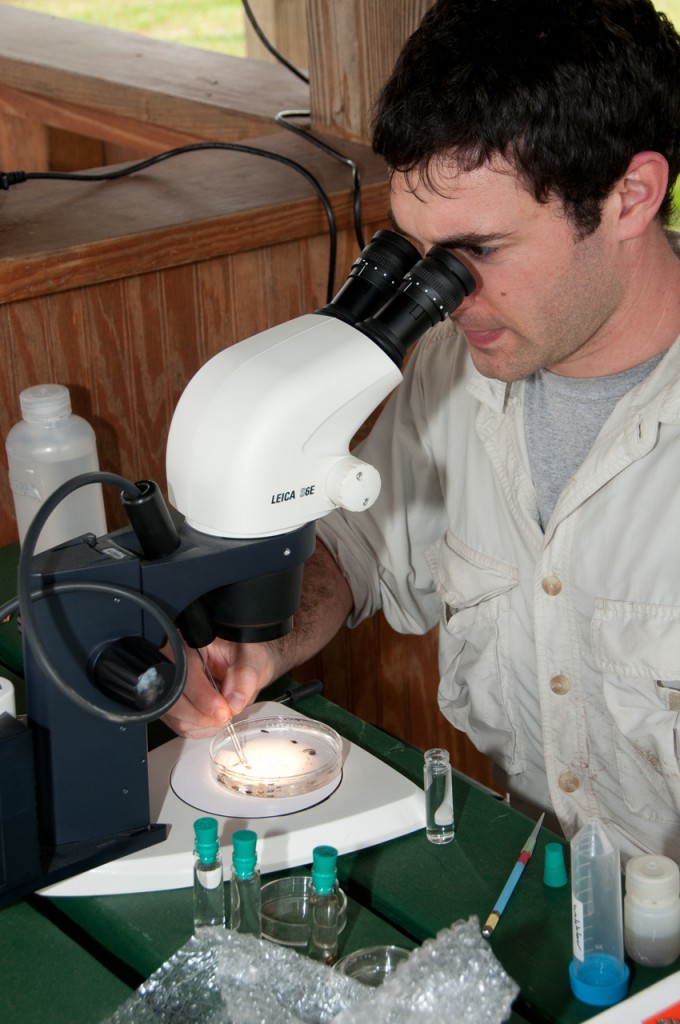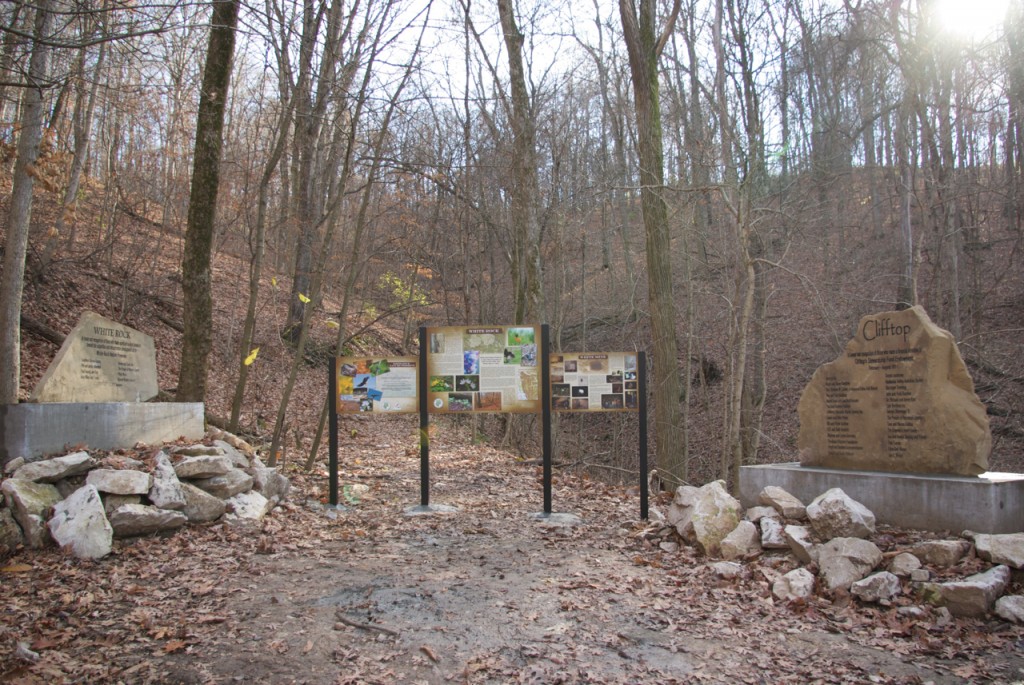Cooperative Conservation and Power of Partnerships Fuel Healthy Environment
In 2001, the U. S. Congress authorized the Wildlife Conservation and Restoration Program and the State Wildlife Grant Program. The purpose of these programs is to improve overall wildlife habitat management in the nation, to lower wildlife recovery costs, and to address shortages in funding wildlife programs. The U.S. Fish and Wildlife Service (USF&WS) was charged with managing the overall national effort. The USF&WS promptly mandated that all states develop 10-year incremental plans for wildlife management in order to be eligible for federal funding, with initial plans due in 2005.
In 2005, IDNR completed the initial Illinois Wildlife Action Plan (IWAP), after an integrated effort on the part of over 130 state and federal agencies and numerous non-governmental organizations. The Illinois Wildlife Action Plan singles out 31 Conservation Opportunity Areas in the state: those places with special and unique natural areas and important wildlife species in need of conservation.
Our own Mississippi River bluff lands comprise two of these Conservation Opportunity Areas, the Hill Prairie Corridor and Karst Sinkhole Plain, a 40-mile long, 130,000 acre corridor in the southern edge of St Clair County, much of Monroe County, and a small portion of Randolph County. The Illinois plan also called for the organization of local volunteer groups to help take up the slack in IDNR manning and resource shortfalls.
Three local volunteer groups have organized. The Salt Lick Point Land & Water Reserve Stewardship Committee has performed yeoman’s work in developing and maintaining a marvelous trail system at Valmeyer’s Reserve. The Friends of Stemler Nature Preserves have contributed untold hours in helping to maintain IDNR’s Stemler Preserves. And, in 2006, Clifftop was founded to serve as a clearinghouse to facilitate volunteer conservation efforts in the entire corridor.
In 2007 Clifftop orchestrated a meeting of several, local conservation stakeholders to develop a sub-regional action plan to help to implement Illinois’ Wildlife Action Plan in the bluff lands corridor. The resulting plan, the Southwestern Illinois Wildlife Action Plan (SWIWAP), is the first and only one of its kind in the state. The plan, and annual reports, can found at http://www.clifftopalliance.org/swiwap.htm.
The plan’s overarching conservation goals are four-fold: preserve and protect the bluff land corridor’s most pristine natural areas, incentivize private landholder natural areas stewardship, increase science-based research in the corridor, and conduct public outreach information programs aimed at conserving and protecting natural areas and wildlife habitat in the corridor.
The SWIWAP stakeholders have framed an informal partnership focused on cooperative and collaborative conservation initiatives. Key partners include local Illinois Department of Natural Resources and Illinois Nature Preserves Commission biologists, the National Wild Turkey Federation, the Monroe and Randolph County Natural Resources Conservation Service, the Monroe County Extension Service, the
Kaskaskia Valley Audubon Society, the Illinois Natural History Survey, the Illinois Speleological Survey, the Monroe County Health Department, Southwestern Illinois Resource Conservation and Development, the Salt Lick Point Stewardship Committee, the Friends of Stemler Nature Preserves, and Clifftop. Clifftop serves as the partnership’s administrative agent.
Since 2008, the partnership has been very successful in implementing many of SWIWAP’s goals. Partners have sponsored or jointly-hosted seven workshops, nine field trips, 28 seminars and presentations, and two festivals, all focused on
the conservation and natural history of the corridor.
Clifftop has garnered $24,000 in small grants to help pay for some of these public outreach activities.
Clifftop, working with IDNR, facilitated bringing special USF&WS program dollars to bluff area landowners to implement conservation practices. And, in another first-ever-in-Illinois milestone, Clifftop and NRCS completed a contract agreement, a Cooperative Conservation Partnership Initiative, to introduce focused USDA conservation funding for area landholders. Taken together, thus far, 53 contracts on 3347 private bluff land acres, for $656,264 in Federal conservation program dollars, have been brought to the area.
Several research projects are underway in the corridor to meet SWIWAP goals.
A National Great Rivers Research & Education Center grant funded a SIU-Carbondale graduate student study on amphibians in our sinkhole plain. Southeast Missouri State University is conducting an entomological study at Fults Hill Prairie Nature Preserve. Eastern Illinois University and IDNR emeriti researchers are conducting a plant study of local prairies and glades. Illinois Natural History Survey scientists are studying springtails in local caves, are researching a local, state-endangered cave snail, and are monitoring bat recolonization at a local abandoned mine. A recent Master’s thesis, at the University of Idaho, begins to help our understanding of local cave amphipods. A University of Illinois researcher is looking at soil microbes in local hill prairies. Several local landowners are participating in the Illinois Barn Owl Recovery Program. And, in May of this year, 51 scientists, from three states, conducted a 24-hour comprehensive species survey at Valmeyer’s Salt Lick Point Reserve. Understanding our area’s extremely rich biological diversity and the statewide importance of our unique natural habitats is fundamental to making the case for permanently protecting some of our most pristine natural areas.
To that end, and again in a first-ever-in-Illinois joint venture conservation project, the Southwestern Illinois Resource Conservation and Development and Clifftop jointly purchased the 475-acre White Rock Tract, a mosaic of rare hill prairies, rarer limestone glades, and deep upland forest, in December 2010. Portions will be open to the public in late October. Funding for this $1.4 million dollar total project cost effort also is a study in partnerships, with generous grants coming from the Grand Victoria Foundation, the Illinois Clean Energy Community Foundation, and a USF&WS State Wildlife Grant.
Early this year, Clifftop’s Board of Directors launched a first-ever local fundraising campaign to establish a Stewardship Fund for its conservation land holdings: a restricted endowment fund, dedicated to long-term management responsibilities. The Stewardship Fund campaign has been an amazing success–with 56 local families and businesses contributing $20,000 to the fund in only a few months.
The power of partnering local landowners and residents, state and federal agencies, and non-governmental organizations to further the cause of local natural area conservation is self-evident. In these hard times of budget deficits and economic downturns, it is necessary to synergize our collective resources and leverage our combined conservation responsibilities. We must cooperate to graduate to new and creative conservation initiatives; we must collaborate in order to celebrate protecting our extremely rare natural areas in the bluff land corridor.
Clifftop, a local nonprofit organization, is focused on preserving and protecting area bluff lands.
A version of this article appeared in the September 2 1011 edition of the Monroe County Independent.
© 2011 all content rights reserved, Clifftop NFP.
Comments are currently closed.

